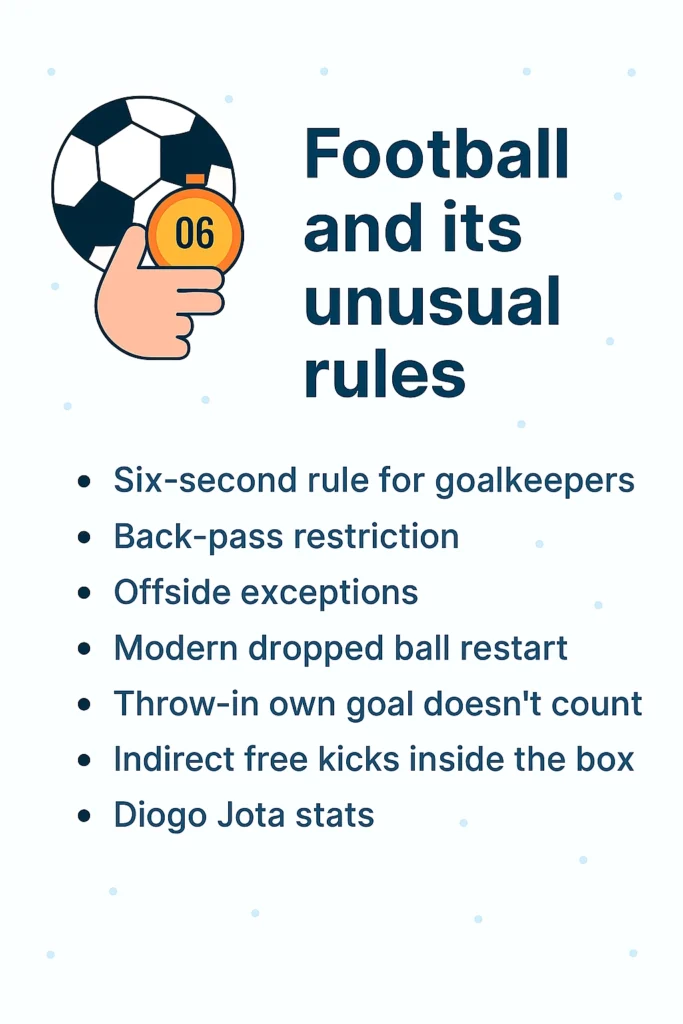Unusual Football Rules
Football is simple to watch, but a few rules still catch people off guard. Here’s a clear, friendly guide to the quirks—explained in plain language so casual fans can follow every call.

Quick overview of unusual rules
- Six-second rule for goalkeepers: Keepers can hold the ball for a maximum of six seconds. Delays can result in an indirect free kick.
- Back-pass restriction: A keeper can’t pick up a ball deliberately kicked by a teammate. Using hands is allowed if it’s a header, chest, or deflection.
- No offside from certain restarts: Players can’t be offside from a throw-in, corner, or goal kick—even if they start behind the defense.
- Dropped ball restart (modern rule): The referee returns the ball to the team that last had possession (or the goalkeeper if play stopped in the penalty area).
- Throw-in own goal doesn’t count: If a throw-in goes straight into the thrower’s own net, it isn’t a goal. The opponents get a corner.
- Indirect free kicks inside the box: Non-contact fouls (dangerous play, keeper time-wasting) can lead to indirect free kicks—even within the penalty area.
- Corner flag cannot be moved: The flag is part of the field. Players can’t bend or remove it to create space for a corner.
- Interference by subs or staff: If a substitute, coach, or staff member interferes, the referee can stop play, caution/dismiss them, and restart with a free kick.
- Equipment and blood rules: Players must leave the field to fix equipment issues or blood on the kit, then re-enter with the referee’s permission.
Why these rules exist
- Fairness: They stop time-wasting and remove easy loopholes, keeping competition balanced.
- Safety: Equipment checks and limits on risky play reduce injuries and stoppages.
- Game flow: Modern restarts (like dropped balls) keep matches moving without chaotic scrambles.
Match-day spotting tips
- Count the keeper’s hold: If the goalkeeper lingers, watch for the raised arm signaling an indirect free kick.
- Check the last touch: Keeper hand use hinges on whether the teammate kicked or headed the ball.
- Remember restart exceptions: Offside doesn’t apply on throw-ins, corners, or goal kicks—smart attackers exploit these moments.
FAQ (simple answers)
- Can a goalkeeper score a goal? Yes—keepers can score from open play, set pieces, or long kicks if the ball legally crosses the line.
- What’s the difference between direct and indirect free kicks? Direct can be shot at goal immediately. Indirect requires a second touch by any player before a goal can count.
- Can the referee change a decision? Yes, until play restarts, or after a VAR review where used.
- Is handball always a foul? No—it depends on intent, position, and whether the arm made the body unnaturally bigger. Referees judge context
